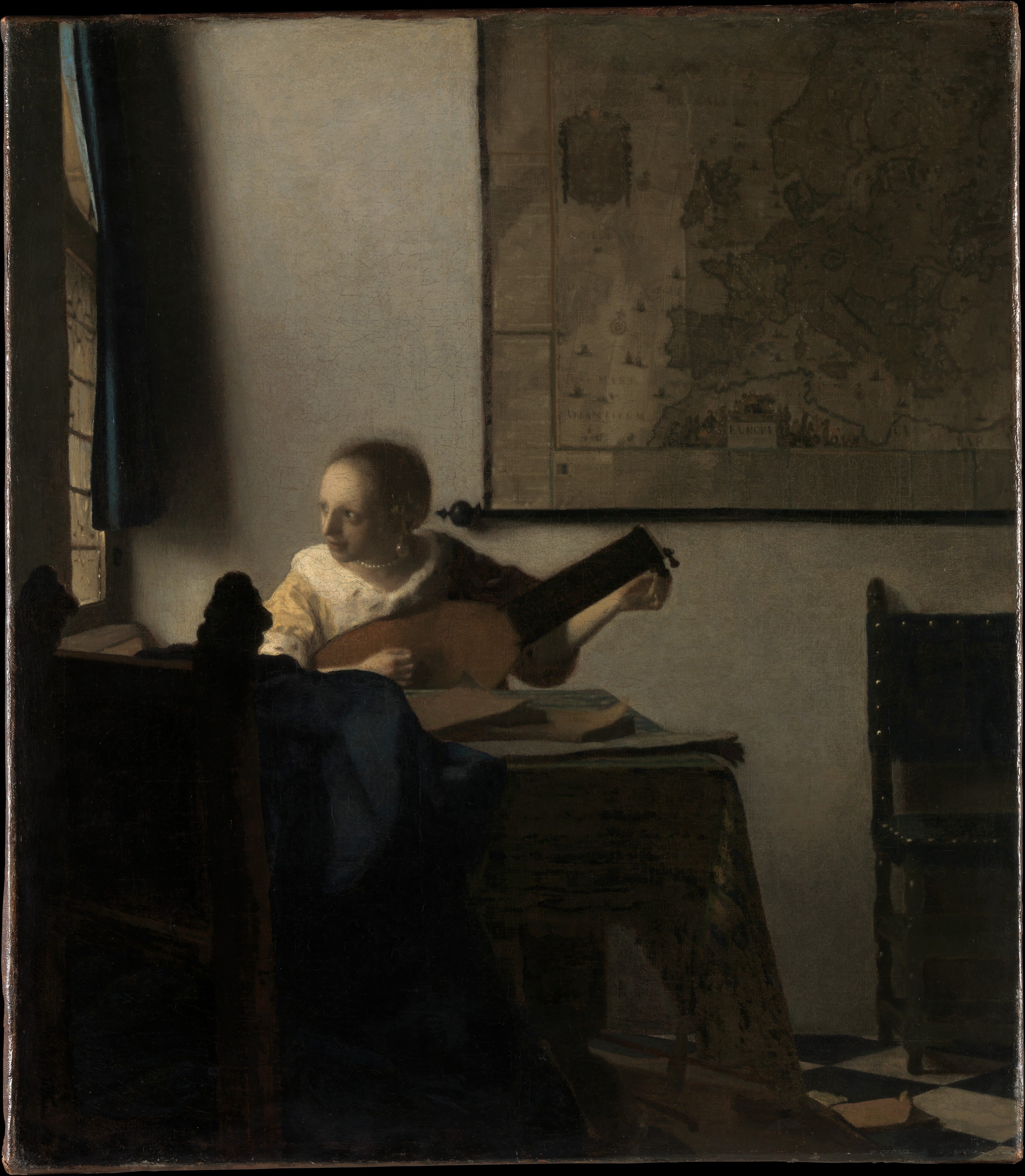
Young Woman with a Lute
In this intimate scene, a young woman pauses while tuning her lute, her gaze drifting toward the window—perhaps in anticipation of a companion’s arrival. Around her, the setting quietly tells a story: open songbooks rest on a nearby table, and a viola da gamba lies on the floor, suggesting that a duet is soon to follow. Far from a simple domestic moment, the painting captures a ritual common among the wealthy youth of the Dutch Republic, where music served not only as a mark of education and refinement, but also as a discreet avenue for courtship and social connection.
The artist evokes a serene elegance, yet fills the composition with subtle clues to the era’s cultural ideals. The woman's richly detailed interior is adorned with a large map of Europe, a decorative feature typical of 17th-century Dutch homes. More than ornament, such maps were symbols of national pride—testaments to the Dutch Republic’s status as a leader in navigation, trade, and cartography during its Golden Age. They reflect both intellectual curiosity and the worldly confidence of the period’s affluent citizens.
Through the careful arrangement of musical instruments, printed materials, and symbolic decor, the painting weaves a layered narrative—a moment of anticipation, artistry, and potential romance, all set against the backdrop of a society that prized both knowledge and refinement. The scene is at once personal and emblematic, offering a glimpse into the domestic rhythms and aspirations of the Dutch Golden Age.
Choose options


Young Woman with a Lute
